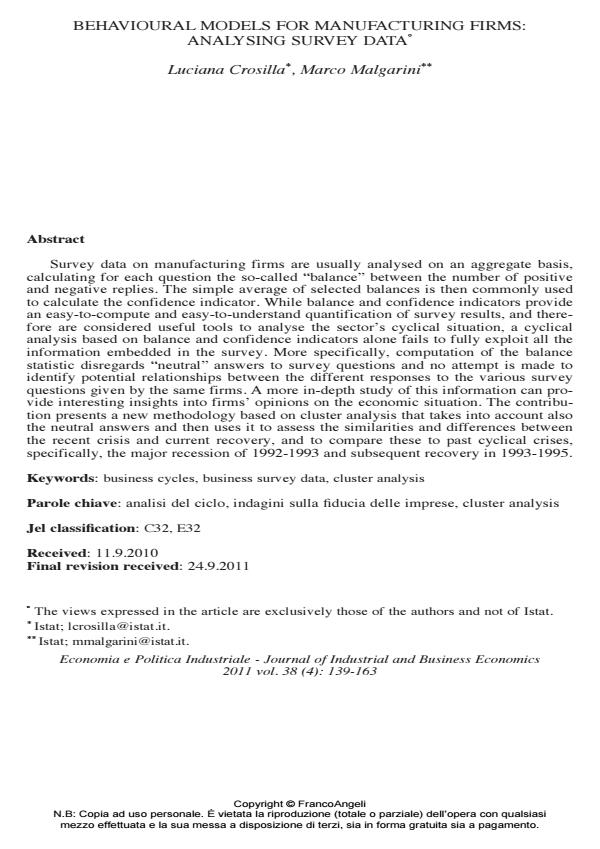Behavioural models for manufacturing firms: analysing survey data
Titolo Rivista ECONOMIA E POLITICA INDUSTRIALE
Autori/Curatori Luciana Crosilla, Marco Malgarini
Anno di pubblicazione 2011 Fascicolo 2011/4
Lingua Inglese Numero pagine 25 P. 139-163 Dimensione file 341 KB
DOI 10.3280/POLI2011-004005
Il DOI è il codice a barre della proprietà intellettuale: per saperne di più
clicca qui
Qui sotto puoi vedere in anteprima la prima pagina di questo articolo.
Se questo articolo ti interessa, lo puoi acquistare (e scaricare in formato pdf) seguendo le facili indicazioni per acquistare il download credit. Acquista Download Credits per scaricare questo Articolo in formato PDF

FrancoAngeli è membro della Publishers International Linking Association, Inc (PILA)associazione indipendente e non profit per facilitare (attraverso i servizi tecnologici implementati da CrossRef.org) l’accesso degli studiosi ai contenuti digitali nelle pubblicazioni professionali e scientifiche
Survey data on manufacturing firms are usually analysed on an aggregate basis, calculating for each question the so-called "balance" between the number of positive and negative replies. The simple average of selected balances is then commonly used to calculate the confidence indicator. While balance and confidence indicators provide an easy-to-compute and easy-to-understand quantification of survey results, and therefore are considered useful tools to analyse the sector’s cyclical situation, a cyclical analysis based on balance and confidence indicators alone fails to fully exploit all the information embedded in the survey. More specifically, computation of the balance statistic disregards "neutral" answers to survey questions and no attempt is made to identify potential relationships between the different responses to the various survey questions given by the same firms. A more in-depth study of this information can provide interesting insights into firms’ opinions on the economic situation. The contribution presents a new methodology based on cluster analysis that takes into account also the neutral answers and then uses it to assess the similarities and differences between the recent crisis and current recovery, and to compare these to past cyclical crises, specifically, the major recession of 1992-1993 and subsequent recovery in 1993-1995.
Parole chiave:Analisi del ciclo, indagini sulla fiducia delle imprese, cluster analysis
Jel codes:C32, E32
Luciana Crosilla, Marco Malgarini, Behavioural models for manufacturing firms: analysing survey data in "ECONOMIA E POLITICA INDUSTRIALE " 4/2011, pp 139-163, DOI: 10.3280/POLI2011-004005